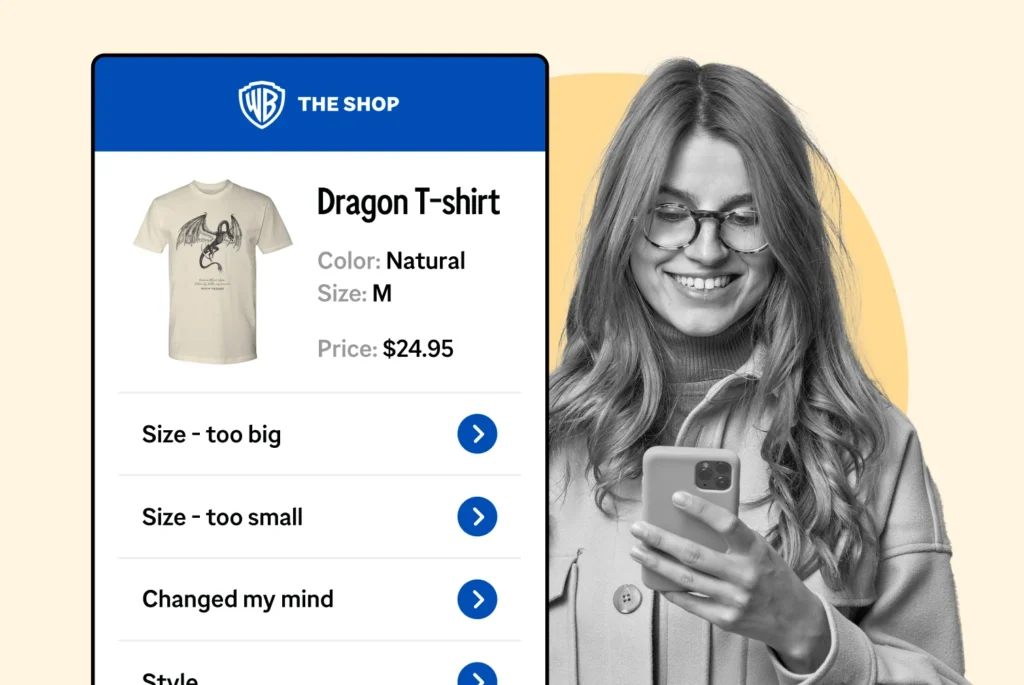
Maximizing Customer Loyalty Through the Return Process
How to structure your returns policy to align with an enduring commitment to customer satisfaction and loyalty through returns.
Shipping, Tracking & Notifications
Boost customer experience and reduce support tickets
Realtime order and shipment tracking
Proactive order and shipping notifications
AI-Enhanced Discounted Labels
Predictive pre-purchase estimated delivery dates
Self-Serivce branded order tracking
Effortless experience delivered
Identify and Resolve Order Issues
Realtime order and shipment tracking
Make returns profitable and delight customers
Flexibility to define any return destinations & conditions
Simplify returns for your customers and team
Incentivize exchanges over returns
Returns management made easy for your team
Returns management made easy for your team
Easy claims and smart upsells
Understand why your customers are returning
In-Store & Curbside Pickup
Unify the online and the in-store experience
Hassle-free pickup experience for customers
In-Store dashboard to keep operations streamlined
In-Store and Online orders unified
Drive foot-traffic to your stores
Shipping, Tracking & Notifications
Boost customer experience and reduce support tickets
Realtime order and shipment tracking
Proactive order and shipping notifications
AI-Enhanced Discounted Labels
Predictive pre-purchase estimated delivery dates
Self-Serivce branded order tracking
Effortless experience delivered
Identify and Resolve Order Issues
Realtime order and shipment tracking
Make returns profitable and delight customers
Flexibility to define any return destinations & conditions
Simplify returns for your customers and team
Incentivize exchanges over returns
Returns management made easy for your team
Returns management made easy for your team
Understand why your customers are returning
In-Store & Curbside Pickup
Unify the online and the in-store experience
Hassle-free pickup experience for customers
In-Store Dashboard to keep operations streamlined
In-Store and Online orders unified
Drive foot-traffic to your stores
Boost customer experience and reduce support tickets
Realtime order and shipment tracking
Proactive order and shipping notifications
AI-Enhanced Discounted Labels
Predictive pre-purchase estimated delivery dates
Self-Serivce branded order tracking
Effortless experience delivered
Make returns profitable and delight customers
Flexibility to define any return destinations & conditions
Simplify returns for your customers and team
Incentivize exchanges over returns
Returns management made easy for your team
Equip your team for precise return checks.
Easy claims and smart upsells
Understand why your customers are returning
Unify the online and the in-store experience
Hassle-free pickup experience for customers
In-Store Dashboard to keep operations streamlined
In-Store and Online orders unified
Drive foot-traffic to your stores
Find the answer to all your questions
Take a step by step trip through our functionality to see how we can improve your ecommerce processes.
Explore the most comon questions about WeSupply
Calculate the ROI that WeSupply can bring you
Read actionable articles on how to optimize your post-purchase experience and decrease support tickets
Get inspired by stories of how our customers implemented an effortless post-purchase experience
Wondering if WeSupply is a good fit for you? Read through our use cases to see how we can help you increase conversion & improve CX!
A Deep Dive into Top Companies' Order Tracking & Returns Strategy
Find the answer to all your questions
Explore the most comon questions about WeSupply
Calculate the ROI that WeSupply can bring you
Request a no strings attached review of your current shopping experience and missed conversion opportunities
Take a step by step trip through our functionality to see how we can improve your ecommerce processes.
Read actionable articles on how to optimize your post-purchase experience and decrease support tickets
Get inspired by stories of how our customers implemented an effortless post-purchase experience
A Deep Dive into Top Companies' Order Tracking & Returns Strategy
Wondering if WeSupply is a good fit for you? Read through our use cases to see how we can help you increase conversion & improve CX!
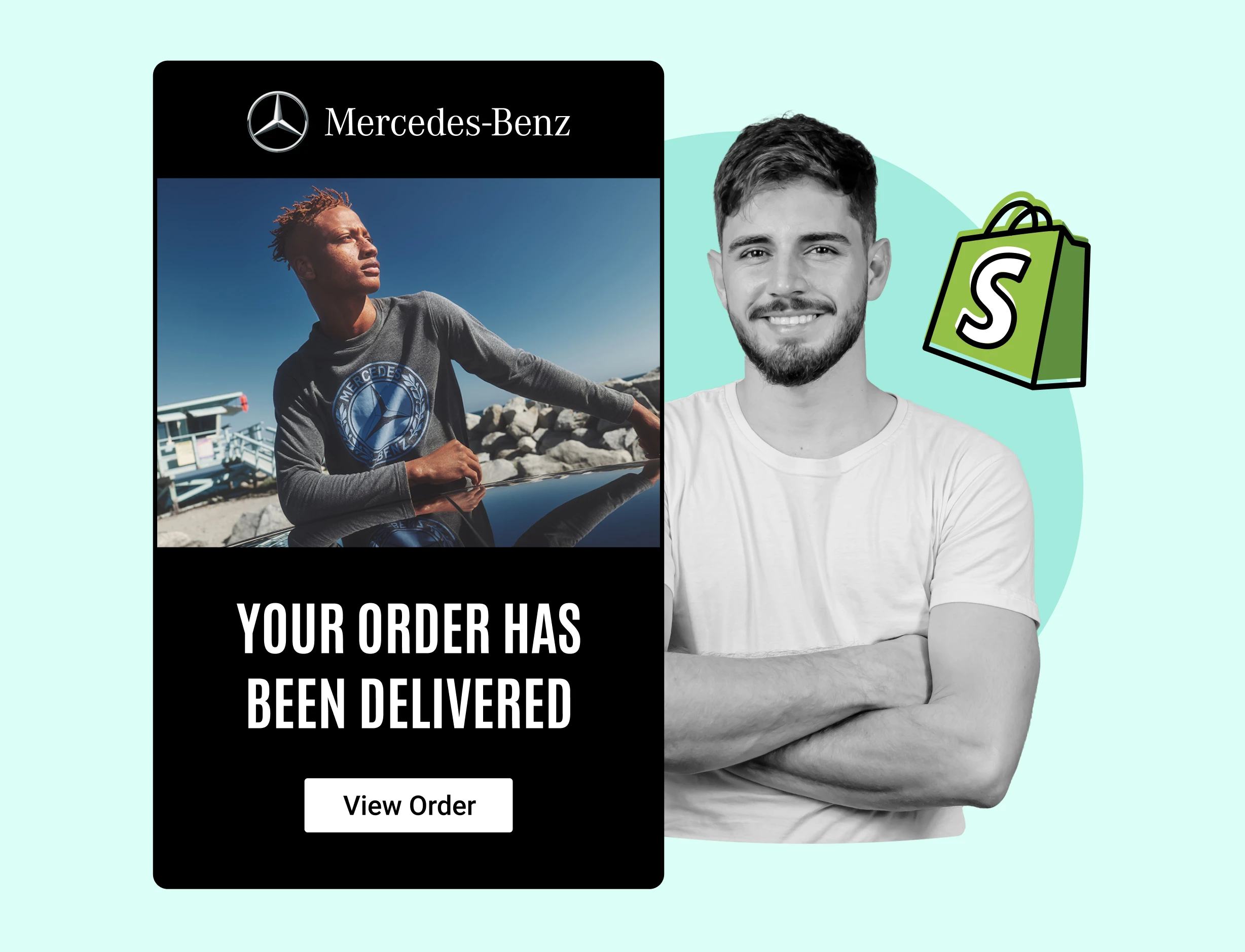
Discovering the ‘shopify customer lifetime value clv’ is critical to your business’s success. How do you calculate CLV and why does it matter? In this article, you’ll learn the measurable value that a customer contributes to your business over time and delve into actionable strategies to enhance this key metric, directly impacting your bottom line. We will provide a no-nonsense guide to calculating CLV for your Shopify store and tips on leveraging this data for smart business decisions.
Customer Lifetime Value (CLV) is a crucial metric for guiding resource allocation, predicting profitability, and informing customer retention strategies for Shopify retailers.
The computation of CLV involves analyzing factors such as average order value, purchase frequency, and the average customer lifespan, which are essential for making informed business decisions and optimizing marketing spend.
Enhancing CLV requires strategies like personalization, targeted marketing campaigns based on customer data, balancing acquisition and retention spend, and fostering long-term customer relationships to drive business growth and profitability on the Shopify platform.
WeSupply boosts Shopify’s Customer Lifetime Value (CLV) with key post-purchase features: branded tracking and returns portals for a uniform customer experience, effective email and SMS communication for engagement, and Return Analytics for insights on return behaviors. Its seamless Shopify integration ensures a streamlined post-purchase process, enhancing customer satisfaction and elevating CLV. Boost your Shopify experience now – Get started by downloading the official WeSupply Shopify App today!
In the retail and e-commerce world, customer lifetime value (CLV) is like the North Star guiding businesses through the expansive universe of customer relationships. But what exactly is CLV? Simply put, it quantifies the total net profit a company expects from a customer throughout their entire association with the business. This includes all transactions, from purchases and returns to shipping expenses.
Retailers and e-commerce businesses rely on CLV to:
Predict the net profit they might earn from a customer during their entire association
Guide businesses to efficiently allocate resources
Make informed decisions regarding customer acquisition and segmentation
CLV is like having a crystal ball that enables you to predict your business’s future profitability and sustainability.
How can Shopify retailers make the most of these CLV insights? The answer lies in utilizing CLV as a means to:
Assess their store’s financial well-being and overall expansion
Impact the experiences and interactions established during the customer journey, thereby enabling more informed choices related to customer retention and business strategy
Calculate CLV by considering the average purchase value, which helps businesses understand the spending habits of their customers.
A thorough understanding and application of CLV is crucial for the success of any e-commerce business. This metric assists businesses in prioritizing the establishment of enduring relationships with high-value customers and comprehending margin sustainability, and evaluating scalability. The customer lifetime value formula is the key to calculating and analyzing a customer’s value accurately over time.
A clear understanding of CLV can optimize marketing spending, facilitate accurate customer targeting, and inform strategic decision-making regarding campaign bids, leading to reduced customer acquisition costs and more informed business decisions. Moreover, strategic factors like average order value and customer purchase recency play a direct role in contributing to CLV by identifying valuable customers who are likely to make repeat purchases. Hence, calculating CLV is not just essential, it’s a game-changer as it offers a financial overview of the customer journey, directly influencing return on investment by enabling businesses to determine the net profit each customer is anticipated to generate over their lifetime.
In the realm of e-commerce, leveraging CLV is fundamental to business growth. It offers a comprehensive perspective on the business’s financial sustainability and enables businesses to comprehend the worth of each customer throughout their entire lifespan. This is especially significant in platforms like Shopify, where businesses rely heavily on the strength of their customer relationships to drive success.
By integrating CLV into their operations, Shopify merchants can optimize their marketing efforts, allocate resources more effectively, and enhance long-term loyalty and profitability. In other words, it’s like having a roadmap that guides the way to a successful and profitable business journey in the digital marketplace.
The concept of the average customer lifespan is inextricably linked to CLV. In e-commerce, this is defined as the average duration for which a customer maintains a relationship with a business, spanning from their first purchase to their last purchase. This lifespan is typically calculated by analyzing historical data to determine the average period (in years or months) from the initial purchase to the final transaction made by a customer cohort.
The average customer lifespan plays a crucial role in the computation of CLV. It aids in forecasting the duration of customer relationships and is factored in by multiplying it with the customer value to derive the CLV. Therefore, the average customer lifespan acts as a compass, guiding businesses towards a better understanding of their customer’s journey and their potential profitability.
Having grasped the importance of CLV and the average customer lifespan, the next question is – how do we calculate CLV for a Shopify store? The essential components needed for calculating CLV include:
The average order value, which signifies the average amount of money spent by a customer per order
The purchase frequency, which indicates the average number of orders placed by a customer
The average customer lifespan
Shopify store owners can calculate customer lifetime value by first calculating the basic customer value, which is done by multiplying the average order value with the purchase frequency. The CLV can then be obtained by multiplying this customer value by the average customer lifespan. But what if you lack sufficient data to calculate the average lifespan of your customers? No worries! You can still derive valuable insights from your CLV calculations by leveraging existing historical transaction data and employing predictive CLV methodologies.
Advanced CLV calculations may also involve using formulas that incorporate a discount rate to determine the present value of future cash flows. The difference between historical and predictive CLV is that while the former is calculated by multiplying the total value of each transaction by the number of transactions a customer makes, the latter estimates the future lifetime value based on historical transactions and predicted retention.
Incorporating WeSupply, a sophisticated post-purchase experience software, into your Shopify strategy can significantly enhance Customer Lifetime Value (CLV). This integration not only elevates the customer’s journey after their purchase but also boosts the Return on Investment (ROI) for your business. By optimizing post-purchase interactions, WeSupply helps in reducing overall business costs and expenses, making it an invaluable addition to your ecommerce platform. Discover the potential financial impact on your business with our intuitive ROI calculator, and see how WeSupply can transform your customer’s post-purchase experience and your bottom line.
In e-commerce, the accuracy of CLV depends heavily on precise customer data. CLV offers a comprehensive view of the business’s long-term financial health, and precise customer data is instrumental in assessing customer value and forecasting their future actions. In Shopify, essential customer data for precise CLV calculation comprises average order value (AOV), average purchase frequency, and average customer lifespan.
However, gathering and analyzing customer data for CLV calculation can be challenging. Typical errors include:
Using incorrect formulas
Disregarding customer feedback
Focusing on inappropriate metrics
Failing to consider the consequences of customer churn
Therefore, it’s crucial to approach the process with a keen eye for accuracy and a clear understanding of the vital components of CLV calculation.
WeSupply champions a data-driven approach, emphasizing analytics to enhance the post-purchase experience and optimize customer lifetime value (CLV). By providing tools for tracking CSAT and NPS, the platform aids in identifying and addressing issues in order processing and product quality. Detailed order level analytics, including status updates and processing times, enable retailers to refine every aspect of the customer journey, thereby ensuring a delightful experience and facilitating accurate CLV calculations.
What strategies can businesses employ to boost their customer lifetime value? Several strategies can be employed, such as:
Implementing personalized shopping experiences
Suggesting products based on browsing or purchasing history
Offering loyalty rewards or exclusive discounts to repeat customers
Consistently engaging with customers through email marketing and social media
Understanding CLV also enables businesses to:
Focus on customers who exhibit higher levels of engagement, loyalty, and receptiveness to upsell efforts
Customize upsell offers through the utilization of pertinent purchase history, preferences, and customer behavior data
Significantly enhance their customer lifetime value
Additionally, loyalty programs play a crucial role in expanding and maintaining market share by providing retailers with the ability to recognize loyal customers, the most valuable consumers, and incentivize them, thereby improving CLV.
WeSupply offers a suite of features designed to elevate the Customer Lifetime Value (CLV) for Shopify users by enhancing customer engagement and loyalty. Key strategies and features include:
1. Branded Returns Portal: A seamless, branded omnichannel experience replaces confusing third-party courier processes, boosting customer loyalty.
2. Offer Instant Credit for Exchanges: This incentivizes exchanges over refunds, lowering return rates and increasing average order value. Customers are rewarded for choosing instant store credit.
3. WeSupply and Justuno Integrations: Enables post-purchase personalization with creative pop-ups and banners on the order tracking page. This integration allows for discount code distribution, intelligent product recommendations, upselling, cross-selling, and highlighting popular products to increase sales.
4. Post-Purchase Notifications: High open-rate email and SMS notifications keep customers informed about their returns and offer personalized deals, enhancing the customer experience and encouraging repeat purchases.
Together, these features form a comprehensive approach to improving Shopify’s CLV by creating a more personalized, engaging, and customer-friendly shopping experience. Ready to elevate your business game? Book a demo with us and let’s turn possibilities into realities!
Incentivize exchanges over returns
Book a quick call with our experts to see how WeSupply can help you save sales through exchanges and boost the average order value using instant store credit.
Personalization in retail and e-commerce has a significant impact on the Customer Lifetime Value (CLV) by enabling online stores to enhance the shopping experience to meet customer needs and foster customer loyalty. Offering personalized shopping experiences can include providing special offers such as free shipping, price matching, or exclusive sales.
Effective methods of personalization for increasing customer loyalty in e-commerce include the implementation of customer personalization strategies and the provision of special offers. This not only helps to retain current clients but also helps to optimize the value derived from these lucrative segments.
WeSupply, as a post-purchase software, is pivotal in fostering customer loyalty through personalized and retention-focused strategies. Its suite of features enhances the customer experience and streamlines the post-purchase journey. Key features include:
These features collectively work to maintain engagement, offer personalized interactions, and ensure customer satisfaction, ultimately driving loyalty and retention. Ready to transform your post-purchase experience? Get started now and download the WeSupply Shopify App today!
CLV analysis empowers Shopify businesses to:
Pinpoint high-value customers
Fine-tune marketing strategies
Effectively target potential customers with similar characteristics, thereby amplifying the efficacy of acquisition tactics
Shape customer retention strategies by identifying customers with the highest potential lifetime value
Understanding CLV is essential for Shopify stores in optimizing their business strategies.
CLV also plays a crucial role in influencing decisions related to:
sales tactics
marketing strategies
product innovation
customer service
It often guides the effectiveness of loyalty programs and other strategic endeavors aimed at enhancing profitability. Through CLV, businesses can make informed decisions regarding product pricing and develop strategies to maximize profit.
CLV insights bolster the optimization of marketing strategies. They provide guidance on:
Resource allocation
Strategic decisions
Customer segmentation
Crafting targeted marketing and customer service initiatives
Upon identifying high-value customers, businesses can craft targeted and personalized campaigns, particularly email marketing, as they prioritize retaining current clients and optimizing the value derived from these lucrative segments.
By using CLV insights to craft personalized marketing messages across multiple channels, including email, businesses can enhance customer engagement and drive higher customer lifetime value.
In essence, CLV insights enable businesses to:
Create a laser-focused marketing strategy
Target their most profitable customers
Maximize revenue
Fuel business growth.
In e-commerce, striking a balance between acquisition and retention spend is vital. It allows businesses to not only attract new customers but also retain the existing ones. This dual focus allows businesses to acquire more valuable customers and establish a solid foundation for long-term success. Furthermore, customer retention is often a more cost-effective strategy than customer acquisition, underscoring the significance of striking the right balance.
Customer Acquisition Cost (CAC) refers to the comprehensive expense incurred in acquiring a customer, encompassing the expenses related to production, storage, and shipping of the product or service. On the other hand, customer retention cost involves adding the total expenses related to retaining customers and then dividing it by the number of active customers. Hence, by balancing acquisition and retention spend based on CLV, businesses can maximize profitability and drive long-term growth.
High-value customers are those who:
Depend significantly on your business
Contribute substantially to your bottom line
Play a significant role in enhancing the CLV through their contribution to repeat purchases, customer loyalty, and increased revenue over time.
To attract such customers, businesses can implement strategies such as:
Ensuring an aesthetically appealing store
Establishing a reputable brand presence
Understanding the preferences of the target audience
Providing high-quality products
Prioritizing customer convenience
Delivering exceptional customer service
Personalizing the customer experience
Implementing a customer loyalty program
Utilizing targeted marketing strategies
In essence, attracting high-value customers requires a combination of effective marketing strategies, exceptional customer service, and a deep understanding of customer preferences and behaviors.
Partner all of the above with WeSupply’s Return Analytics enhances the ability to boost Customer Lifetime Value (CLV) by understanding customer return behaviors. This tool identifies the most returned products, the reasons behind these returns, and highlights patterns among serial returners. Key features include:
Pinpointing most exchanged products and collecting customer feedback.
Analyzing the financial impact of returns and exchanges.
Examining returns by region and specific reasons.
Gaining insights into the effect of returns on CLV.
These analytics provide actionable insights for improving product offerings and customer satisfaction, essential for attracting and retaining high-value customers.
Sustained customer relationships in Shopify have a positive impact on CLV by:
Minimizing dependence on short-term gains
Ensuring consistent revenue streams
Enhancing customer loyalty
Improving customer support, products, pricing, referrals
Positioning the business for long-term success.
Customer loyalty programs in Shopify, including paid loyalty programs and POS loyalty programs, play a crucial role in nurturing sustained customer relationships through the provision of immediate and ongoing benefits. When implemented with precision, these programs effectively cultivate enduring customer loyalty, thereby enhancing their lifetime value and contributing to the overall growth and profitability of the business.
Exceptional customer service can:
Enhance customer retention and prolong the customer relationship, thereby increasing CLV
Shape the customer’s perception of the brand
Increase the customer’s propensity for repeat purchases
Therefore, delivering exceptional customer service is not just a good practice; it’s a strategic move to enhance the overall CLV.
Effective customer service strategies that have positively impacted CLV include providing exceptional customer service, investing in quality customer service, and implementing strategies for customer retention and repeat sales. Therefore, an exceptional customer service strategy is a key driver of not just customer satisfaction but also customer lifetime value, customer retention, and overall business profitability.
WeSupply plays a pivotal role in enhancing Customer Lifetime Value (CLV) by revolutionizing customer service. By significantly cutting down on ‘Where Is My Order?’ (WISMO) inquiries, WeSupply allows customer service teams to dedicate their efforts to more crucial aspects of customer interaction. This shift in focus leads to the development of stronger customer relationships, fostering increased satisfaction and brand loyalty. The result is a more efficient customer service experience that not only resolves issues swiftly but also nurtures a loyal customer base, integral to long-term business success.
Just like in the case of Kai USA, facing a surge in customer inquiries due to the growth of its eCommerce operations, implemented WeSupply to streamline its post-purchase customer experience. Their unique challenge involved managing orders from multiple websites and store locations, especially handling products like knives which require special shipping care. The integration of WeSupply with their Magento platform significantly reduced customer inquiries by 92%, offering full visibility into warehouse processing and shipping times. This solution provided a centralized order tracking system, eliminating the need for employees to switch between different apps and platforms, thereby enhancing overall customer satisfaction and operational efficiency. Discover how Kai USA revolutionized their customer experience with WeSupply – Explore the full case study now.
Combat inconvenience with proactivity & self service
Book a quick call with our experts to see how WeSupply can help you make returns easy for your customers with a beautiful, self-service solution that makes their experience easier while also providing new ways to lower costs and earn back revenue.
Utilizing personalized communication in Shopify can elevate customer engagement by tailoring the shopping experience to individual needs and interests. This can be achieved by sustaining communication with customers post-purchase and employing personalized marketing tactics, ultimately leading to heightened customer engagement and loyalty for Shopify merchants.
Research indicates that a reasonably precise targeted advertisement can extend beyond click behavior and impact how consumers perceive their relationship with the brand, cultivating a feeling of personal connection and relevance. Additionally, segmentation is crucial in maintaining a relevant connection with customers as it enables companies to execute more targeted campaigns.
These strategies not only enhance customer satisfaction but also contribute to maximizing CLV and promoting business growth.
WeSupply excels in engaging customers beyond their initial purchase, playing a vital role in maximizing Customer Lifetime Value (CLV). With post-purchase email and SMS notifications, WeSupply ensures customers are always in the loop with proactive return notifications. They also offer custom and personalized deals post-purchase, enhancing the customer experience and eliminating the need for follow-up calls. This strategy not only boosts customer satisfaction but also nurtures continuous engagement, crucial for fostering loyalty and encouraging repeat business.
Customer segmentation in e-commerce involves categorizing the customer base into distinct groups based on specific traits or purchasing behaviors. This practice is crucial as it facilitates a deeper comprehension of various customer segments and enables a more focused and effective approach in marketing and customer retention endeavors.
By understanding the different customer segments, businesses can:
Tailor their offers and services to cater to the specific preferences and needs of each segment
Enhance customer satisfaction
Maximize revenue by attracting and retaining high-value customers
Contribute to the overall growth and profitability of the business.
Product development is another area where CLV insights can provide valuable guidance. Online retailers integrate CLV in their product development process through:
Implementation of a long-term strategy
Data collection
Assessment of true customer value
Allocation of investments towards the most valuable customers.
Product development concepts that can be generated from high CLV customer data include:
Focusing on acquiring new customers
Retaining existing clients
Investing in cross-selling and upselling strategies
Emphasizing customer care and loyalty programs
Tailoring product features to high-value customer needs
Therefore, CLV insights not only guide businesses towards profitability but also inform their product development strategies to cater to customer needs more effectively.
Integrating CLV into a Shopify growth strategy offers several benefits, including:
Insights to make informed decisions about marketing strategies
Understanding customer acquisition and retention efforts
Optimizing marketing efforts
Allocating resources effectively
Enhancing long-term loyalty and profitability
This approach is essential for businesses looking to maximize their growth and success on the Shopify platform.
Factors such as strategic resource allocation, retention and loyalty, maximizing profits, and accurate customer segmentation are crucial when integrating CLV into a Shopify growth strategy. It is also important to employ effective tactics to increase customer lifetime value in order to drive more sales from existing customers and support long-term growth.
Thus, integrating CLV into your Shopify growth strategy is the key to driving long-term success and profitability.
As we wrap up this comprehensive guide to CLV, it’s clear that this metric is not just a number but a powerful tool that can guide businesses, particularly Shopify merchants, towards sustainable growth and profitability. By understanding and effectively leveraging CLV, businesses can make well-informed decisions regarding customer acquisition, retention, marketing strategies, and product development.
Remember, the journey towards maximizing CLV is continuous and dynamic. It requires consistent efforts to engage customers, provide exceptional customer service, and offer personalized experiences that cater to their needs and preferences. So, are you ready to leverage CLV to steer your Shopify store towards unparalleled growth and profitability?
WeSupply enhances Customer Lifetime Value (CLV) for Shopify retailers through its comprehensive post-purchase features. It offers branded tracking and returns portals for consistent customer experiences, coupled with highly effective email and SMS communication to keep customers engaged. The platform’s Return Analytics provide critical insights into return behaviors, aiding in product and policy refinement. With seamless integrations into Shopify and other tools, WeSupply ensures an efficient and cohesive post-purchase journey, effectively boosting customer satisfaction, reducing return rates, and driving CLV. Discover the key to elevated customer experiences – Book a demo with WeSupply today and unlock your business’s full potential!
Yes, you can calculate customer lifetime value on Shopify by multiplying the Average Order Value (AOV) by the Average Purchase Frequency (APF), and then multiplying the result by the Average Customer Lifespan (ACL).
To calculate the customer lifetime value (CLV), you can use the formula CLV = Average Order Value (AOV) X Average Purchase Frequency Rate (AFR), or the formula (Average Revenue per User * Gross Margin) / Churn Rate. These formulas consider factors including revenue, purchase frequency, and churn rate.
WeSupply enhances the post-purchase experience, leading to increased customer satisfaction, reduced return rates, and ultimately, a significant boost in Customer Lifetime Value.
WeSupply is a post-purchase platform that enhances Customer Lifetime Value for Shopify retailers. It provides tools to create branded tracking and returns experiences, communicate effectively with customers, and analyze return behaviors.
Yes, WeSupply seamlessly integrates with numerous third-party tools, ensuring a cohesive and efficient post-purchase process.

Learn How To Create Successful Post Purchase Email Campaigns
Build an effective post-purchase email flow that helps you increase customer satisfaction and drive revenue growth!

How to structure your returns policy to align with an enduring commitment to customer satisfaction and loyalty through returns.
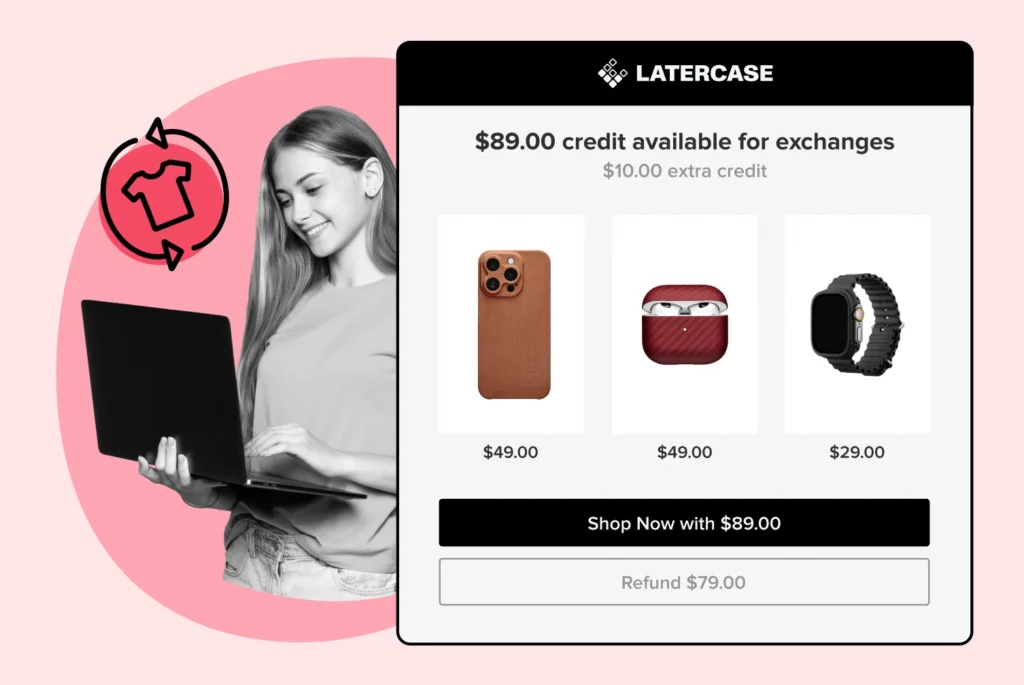
Discover the direct methods through which your returns data can be transformed into actionable strategies.
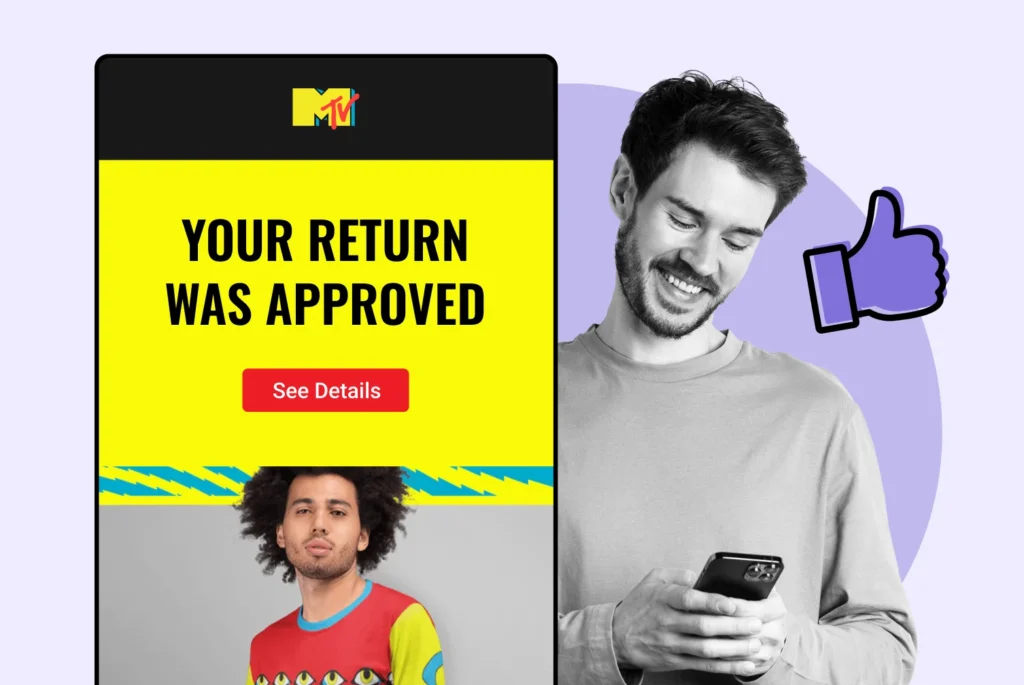
Approaches to optimize returns, enhancing customer lifetime value with returns, and consequently boosting your business’s long-term success.
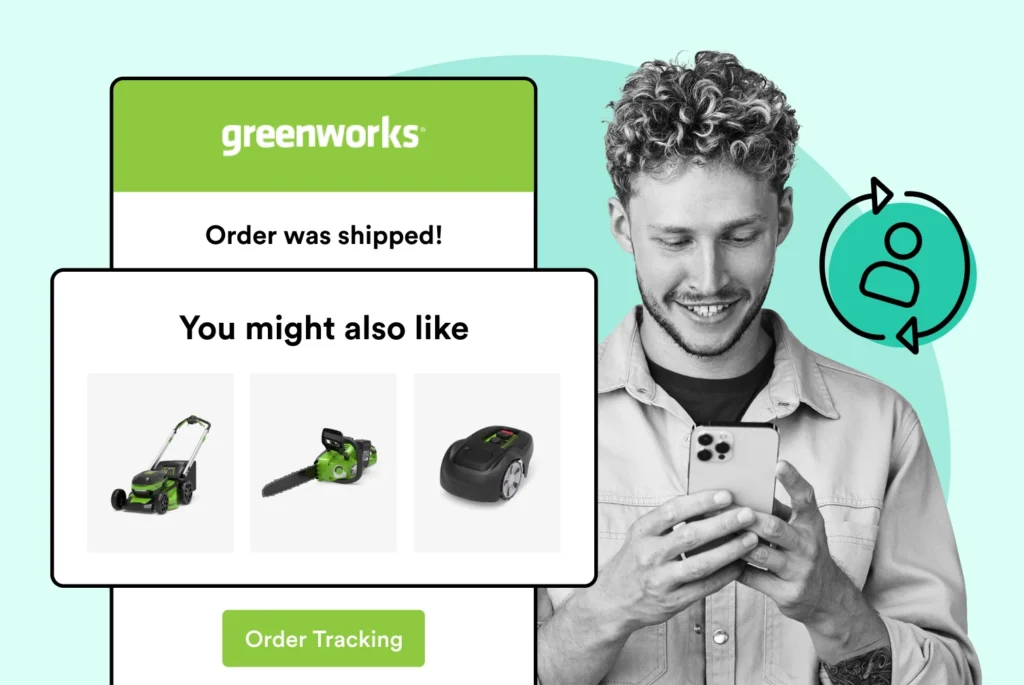
Practical upselling strategies: encourage repeat business & build stronger customer relationships, directly contributing to enhanced customer lifetime value.
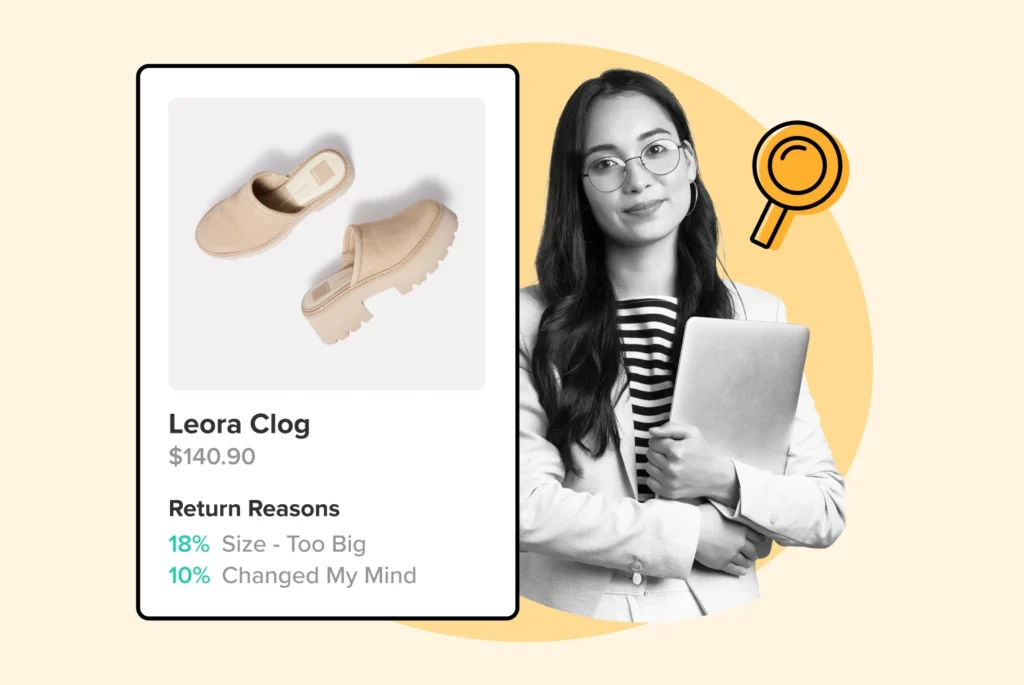
How to leverage returns data, enhance the returns experience, and ultimately, increase customer lifetime value e-commerce returns.
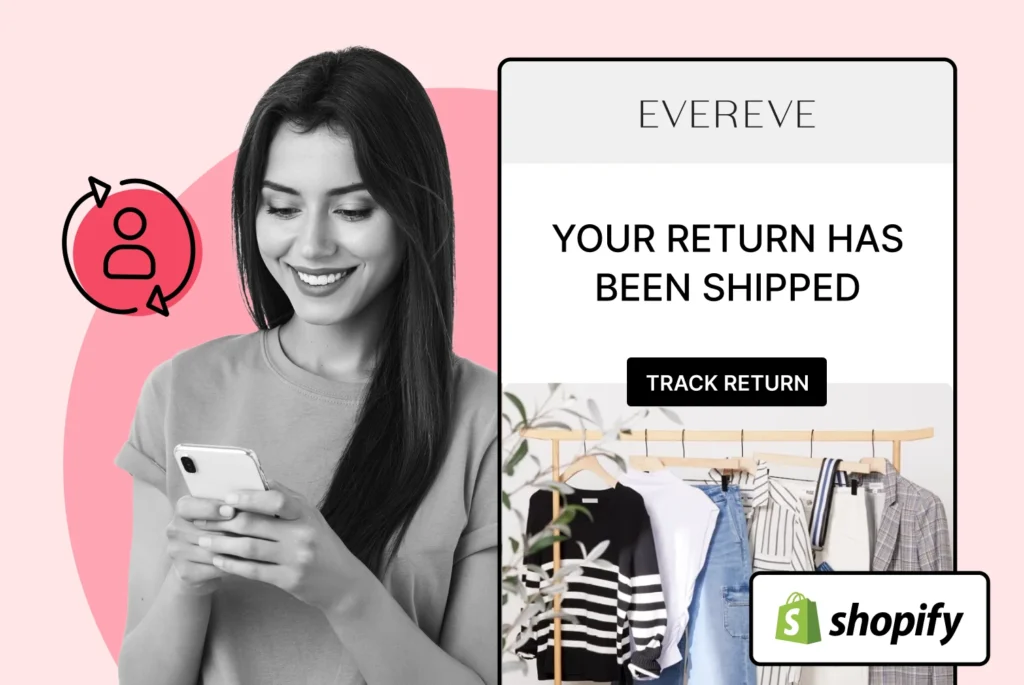
If you’re a Shopify retailer seeking strategies to enhance customer retention & maximize repeat sales, then you’re in the right place.
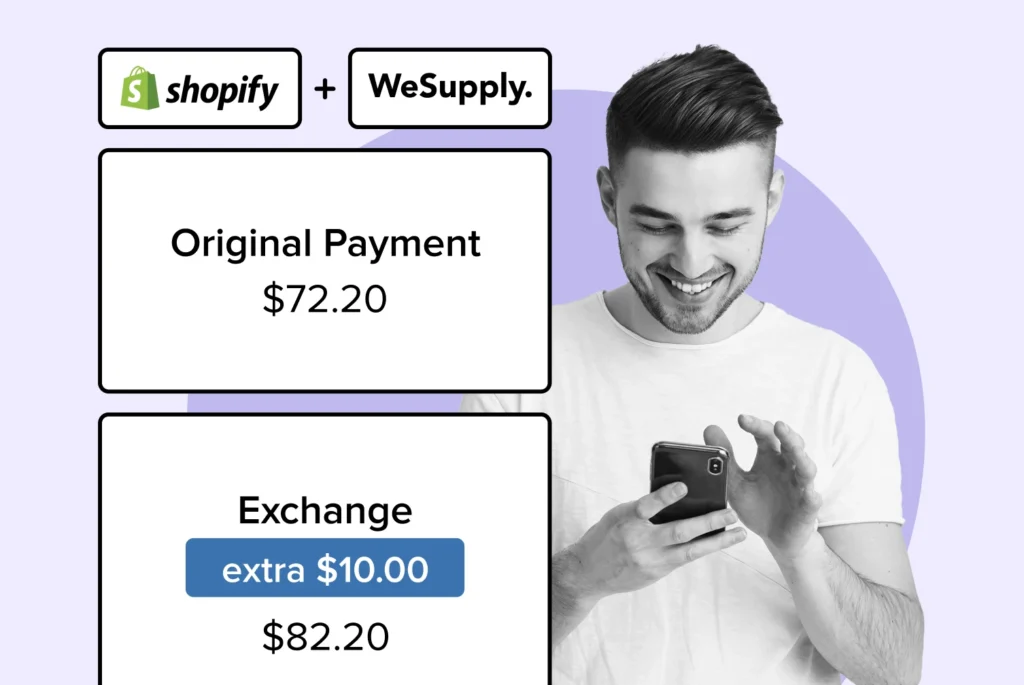
Explore the strategic use of discounts to improve Shopify CLV, the balance between enticing offers and brand value.
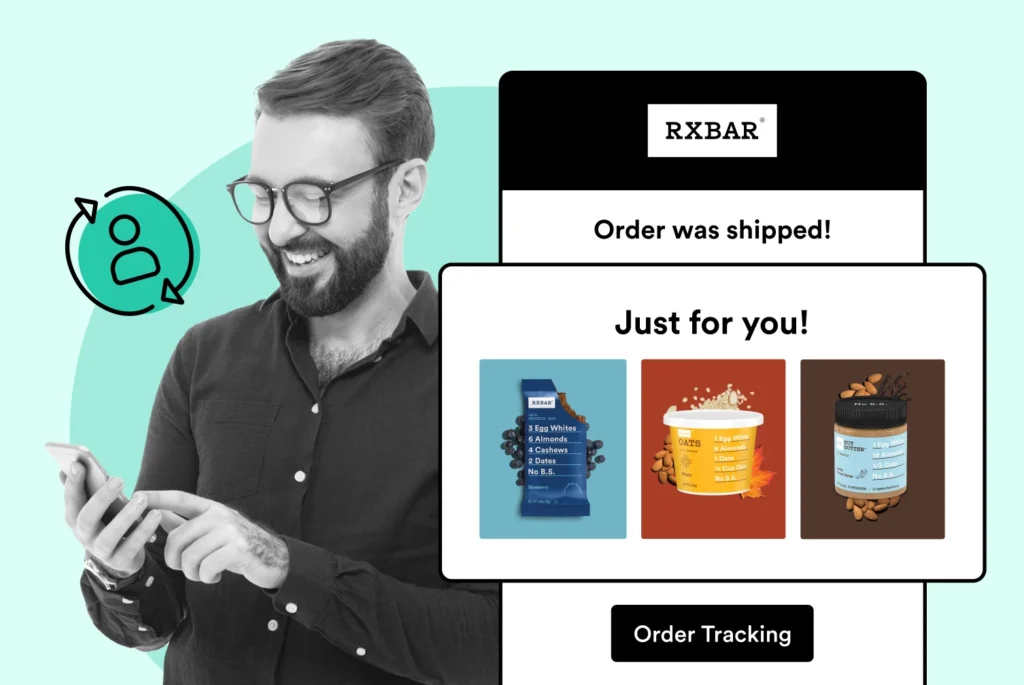
Practical upselling strategies: encourage repeat business & build stronger customer relationships, directly contributing to enhanced customer lifetime value.
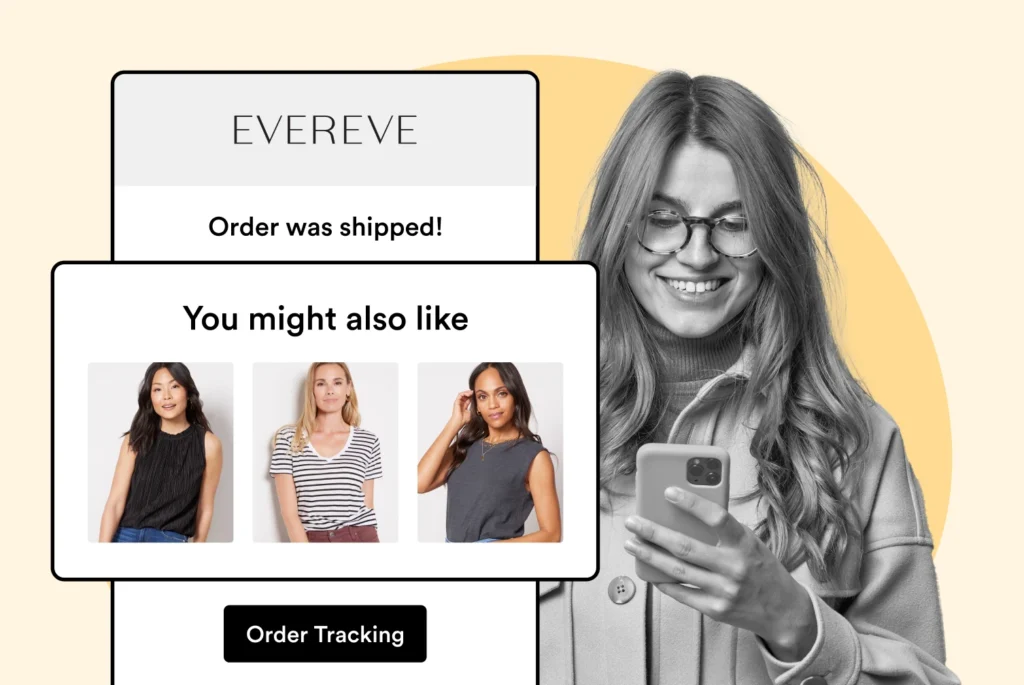
Let’s explore practical strategies to increase your CLV: how to calculate, analyze, and amplify this pivotal metric.